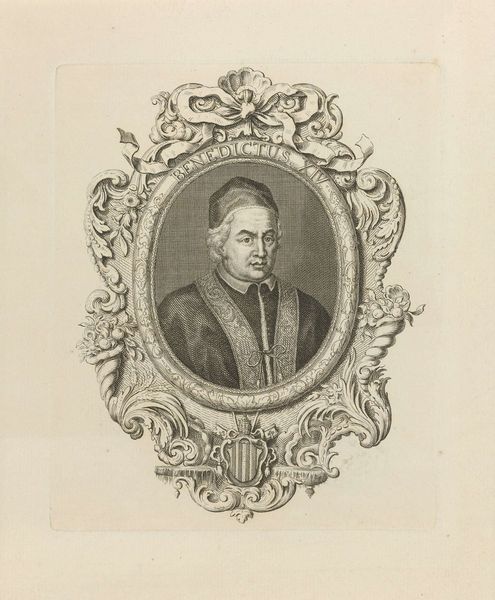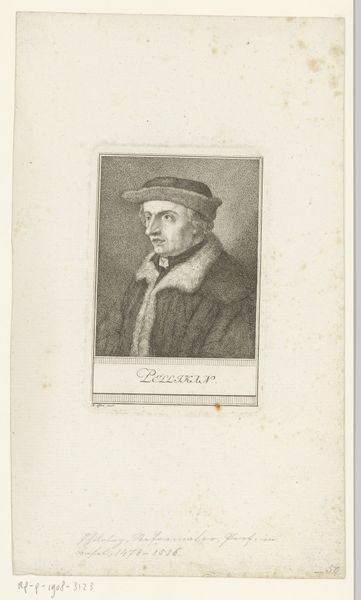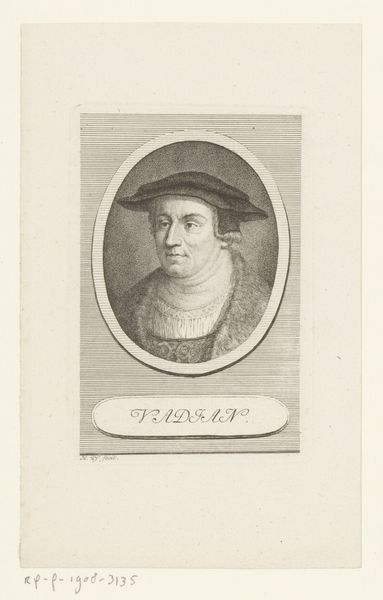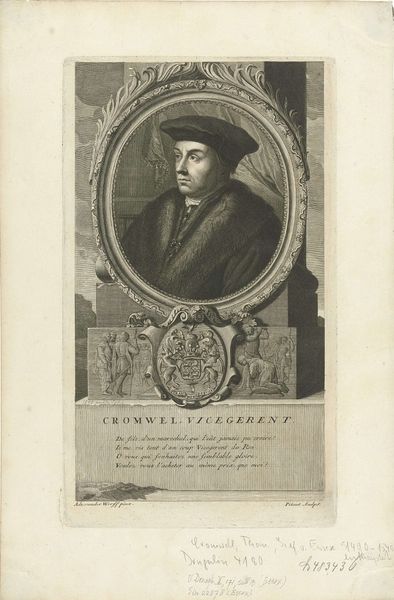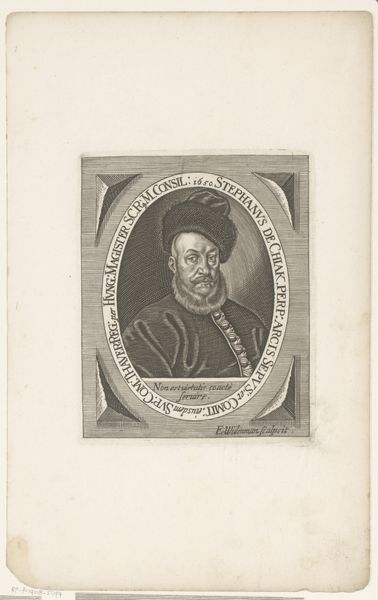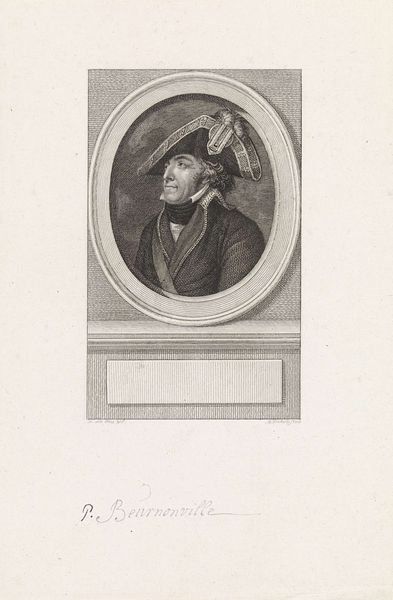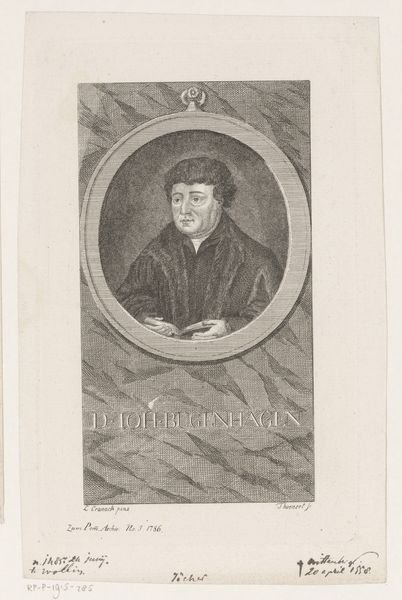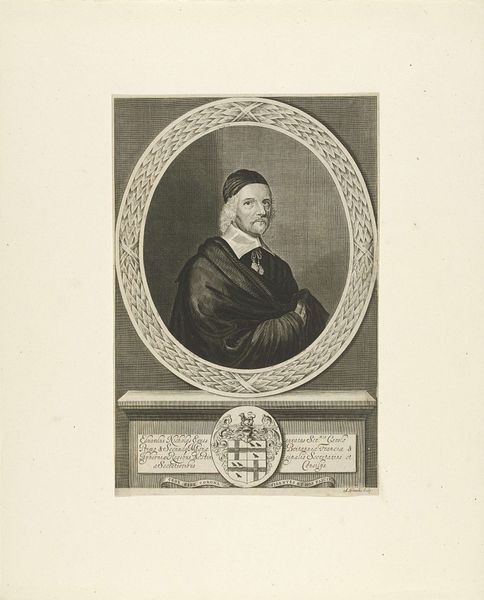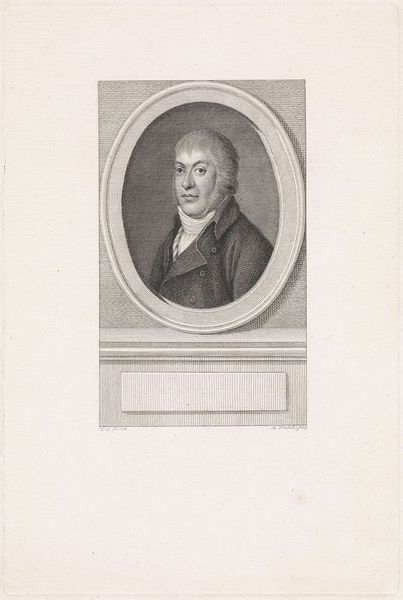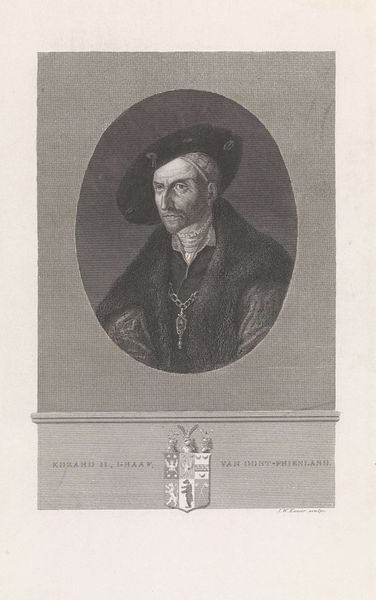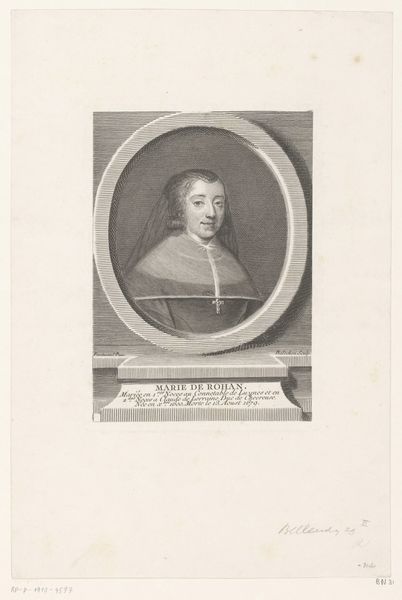
Dimensions: height 165 mm, width 115 mm
Copyright: Rijks Museum: Open Domain
Curator: Here we see “Portret van Pieter Cornelisz Boom,” an engraving produced between 1783 and 1795 by Reinier Vinkeles, currently residing in the Rijksmuseum. Editor: It's remarkably austere, even severe, wouldn't you say? The sitter's gaze feels very direct, and the overall presentation… formal. It gives the sense of carefully controlled presentation. Curator: Precisely. Consider the context of the late 18th century, and the rising importance of civic identity. The man depicted is Pieter Cornelisz Boom, a merchant and shipowner prominent in Amsterdam's economic and political landscape. Vinkeles captures more than just a likeness; he conveys Boom's status and role within the city. Editor: Yes, the embellishments suggest something of public performance rather than merely personal commemoration. The classical detailing of the frame seems deliberately designed to suggest solidity and tradition. The sitter, posed within an oval portrait held in a rectangular surround ornamented with laurel festoons. Is this perhaps hinting at a connection with ancient civic ideals? Curator: I agree completely. The setting of the image is important and cannot be ignored. The engraver chose to include classical allusions within the portrait frame as an intentional connection between the sitter and certain virtues associated with a certain vision of ideal citizenship. Editor: I wonder though, about accessibility? Engravings like these played a critical role in disseminating images, right? How far beyond elite circles did its influence reach? Can we consider this image to reinforce existing hierarchies of power and status, or perhaps was the proliferation of prints democratizing image consumption? Curator: That's a pertinent question, isn't it? Certainly, engravings enabled broader access than painted portraits. However, consider the economic realities of print ownership. Even multiplied images would mostly find their way to bourgeois and patrician households. These images serve to reinforce Boom’s social standing but perhaps inadvertently served as an aspirational model for the upwardly mobile? Editor: Food for thought indeed. Thinking about such things helps me to reconsider the subject's inscrutable expression… a little more understandingly now. Curator: And for me, it further highlights the intersection of art and socio-political representation in 18th-century Dutch society. A world away and yet also so close.
Comments
No comments
Be the first to comment and join the conversation on the ultimate creative platform.
